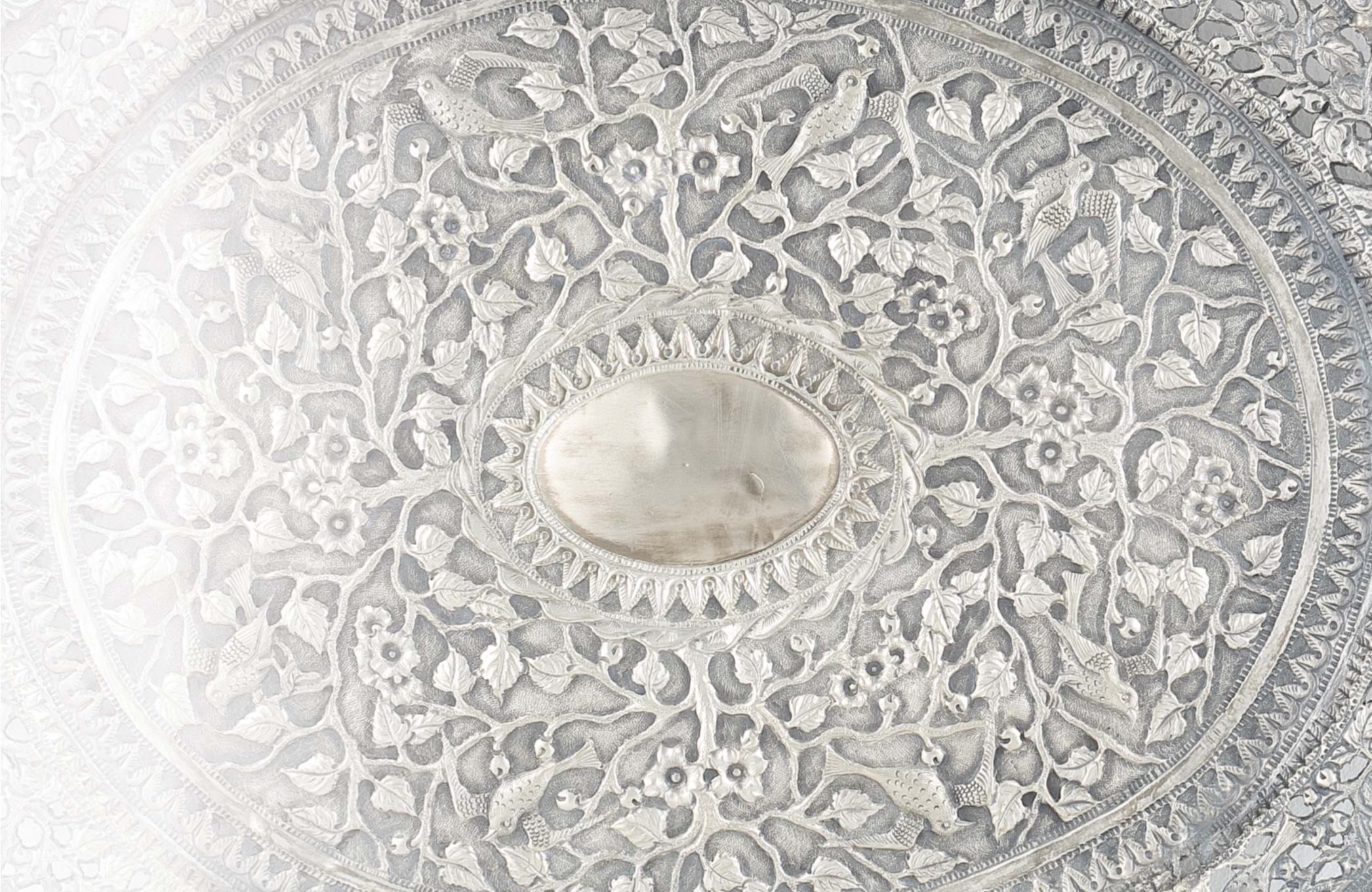

Oomersi Mawji was the son of
a cobbler and rose to become
court silversmith to the Maharaos
of Kutch, and the Maharajas of
Baroda, two of the most important
royal courts in princely India. The
firm of Oomersi Mawji & Sons
ceased operations in the 1930s.
O.M. silver, as it has come to be
known among collectors, has
an endearing value as much for
its artistry as for the history of
Indian craftsmanship associated
with its manufacture. Objects
manufactured by the workshops
of Oomersi Mawji can be seen at
the Victoria and Albert Museum in
London, the Musee Guimet in Paris
and Harvard University's Arthur
M. Sackler Museum, and at most
major museums all over the world.
Artisans in the Bhuj region of
Kutch enjoyed patronage from
a lineage of rulers, including the
Gaekwads and the Maharaos. The
Maharao of Kutch, Khengarji III,
played a particularly significant role
in helping Kutch silversmithsgain
international
recognition
by
ensuring that they regularly
attended regional and international
silver exhibitions to display and
popularise their creations.
OOMERSI MAWJI
(Lots 20‒23)
34
35


















